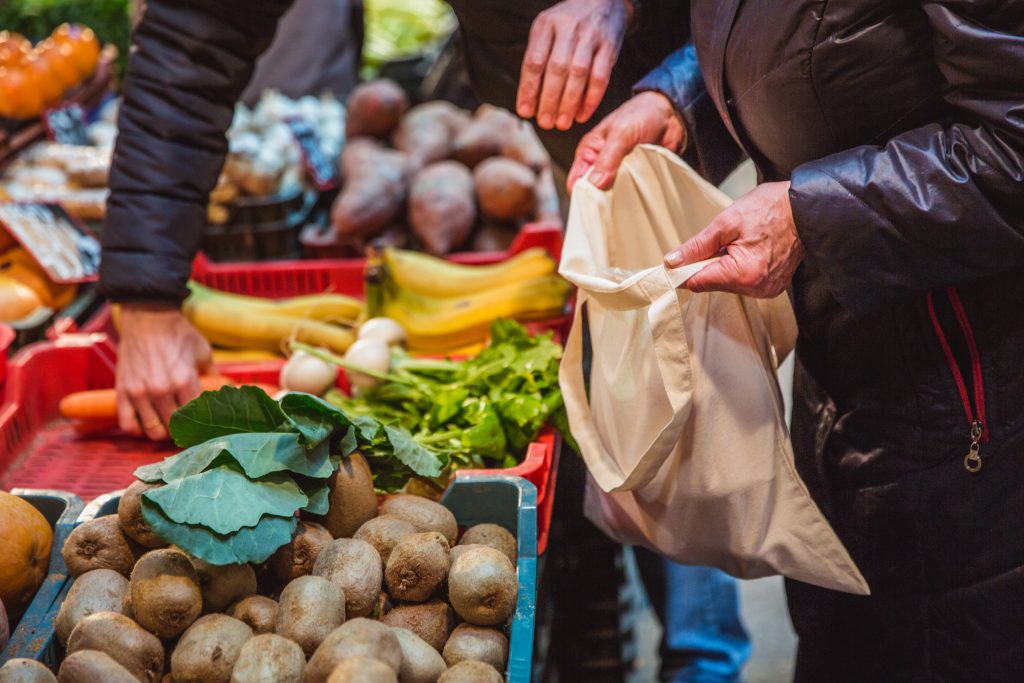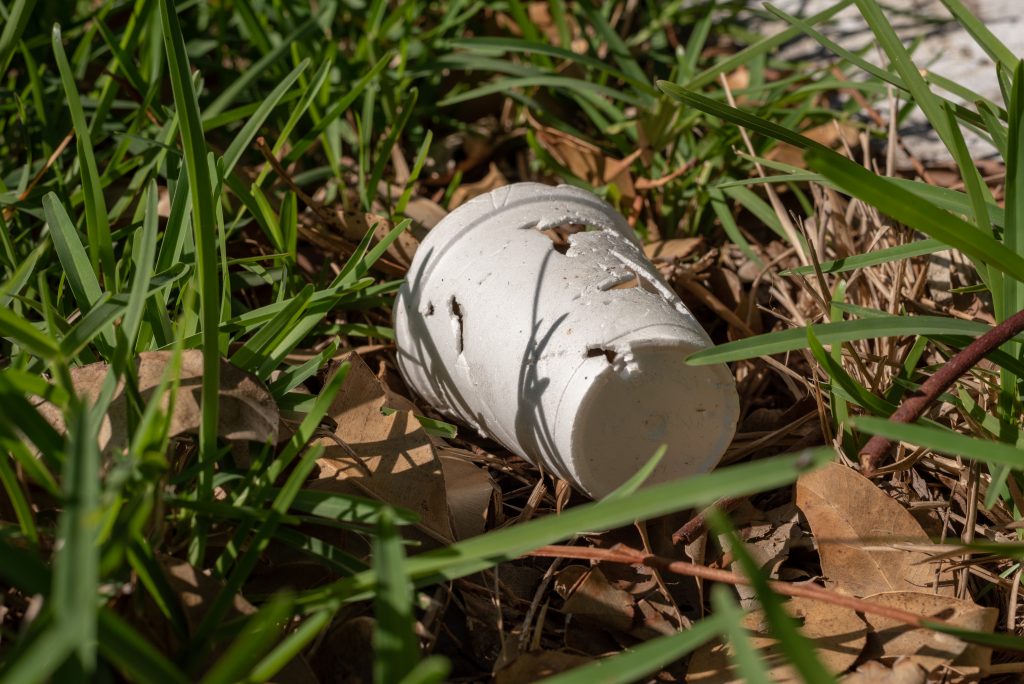Is it possible to grocery shop waste-free? While 100% waste-free takes a little practice and forethought, there are some ways you can start minimizing your waste each time you go to the grocery store! Little by little, we can get there. It’s not just about minimizing your own personal waste (although that’s a big deal) or inspiring others to make changes in their daily lives (also a big deal). It’s also about supporting businesses that align with your values and your budget. So, we’ve outlined a few tips to start making your trip to the grocery store a waste-free one!
Reusable Bags
You’ve probably heard it before and you’ll hear it again, but one of the best ways to shop waste-free is to bring reusable bags. Eliminating single-use plastic bags from your life can keep that same plastic from ending up in the oceans we love. Reusable bags don’t just have to be for the check-out line. You can also bring smaller bags to carry produce, bags to separate meats or frozen foods from the rest of your groceries, and cloth bags for food items like bread. Check out Wirecutter’s list for the best reusable bags of the year!

Reusable containers
Reusable containers are a great way to cut down on both waste and unloading at home! When you bring glass jars, bread bags, or produce bags, check with your grocery store’s customer service before you put something in a jar. They might want you to weigh your jar or bag and put a sticker with the weight on it before you fill it, so they know how much the actual item weighs. You can also put your own sticker on it and just show that the weight is accurate. Then, you can fill your reusable containers with everything from cheese and breads to meats! And when you get back home, all you have to do is put the containers away.
Avoid polystyrene foam.
This is one of those tips that is hard to follow but can have a big impact. Styrofoam, a trademarked name that refers to polystyrene foam, is a type of non-biodegradable plastic that breaks down into little beads that are consumed by aquatic and marine life. It is listed as a possible cancer-causing agent and often contains flame retardant chemicals. So, while you might want to try the cookies on the Styrofoam tray, avoid buying this material whenever you can, and perhaps pick the cookies in a different container.

Plan your meals in advance
Another way to cut down on your grocery waste is buying in bulk. If you plan your meals at the beginning of the week or have the storage to keep household products you’re constantly running out of, you can buy products in bulk to cut down on packaging. Often, buying in bulk saves money too and there are often deals if you have your eye out for them!
Farmer’s Markets
There are a host of benefits in shopping local. Not only does it support the local economy and the small businesses owned by neighbors, often the products are fresher! And of course, by cutting down on emissions involved in shipping, supporting businesses that use natural pest repellants, and avoiding wasteful packaging, farmer’s markets go a long way in helping the environment. Check out some of our tips to take to the farmer’s market!
Re-consider where you shop.
Support brands that support the lifestyle you want to lead. Businesses, like The Wally Shop grocery delivery service or food cooperatives in your community, are making a difference in how we shop and how we think as conscious consumers. And larger chains are partaking in the #reusablesrevolution, too, by providing bulk buy options and reusable packaging. Check out places across the United States where you can eco-consciously shop here.
So, keep your shopping kit with you and each time you go back to the grocery store and commit to making one more choice to get closer to shopping waste-free. It’s easier than you think!
 Food
Food Farmers
Farmers Sustainable Living
Sustainable Living Living Planet
Living Planet News
News